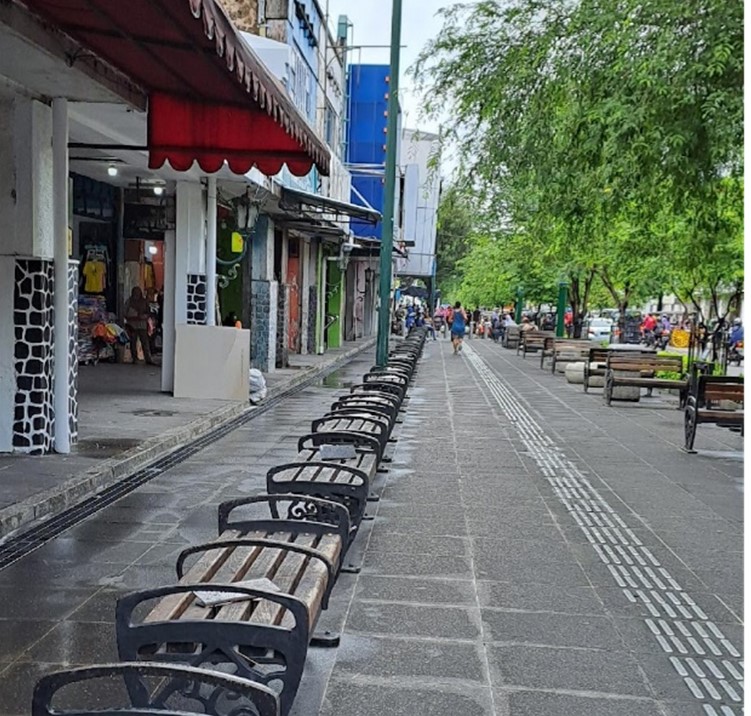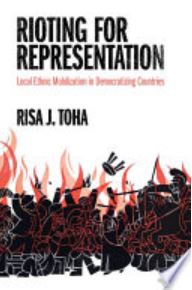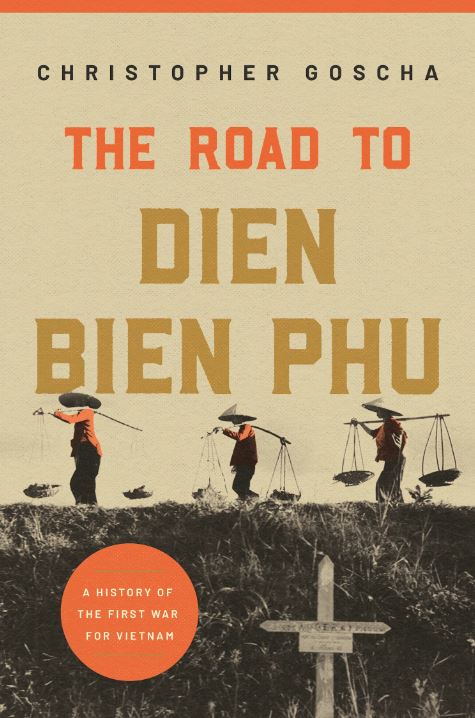On Friday, 13 October 2017, the Saw Swee Hock Southeast Asia Centre (SEAC) and the LSE Global South Unit organised a panel discussion to explore the role and societal embeddedness of Ethnic Armed Organisations (EAOs) in Myanmar. The event brought together five speakers who have all conducted extensive fieldwork in Myanmar, particularly in relation to the impact of the ethnic conflict on borderland communities. The panel offered a brief overview of the ethnic conflict and past efforts to bring peace to the country. Regarding the ongoing peace process, they pointed to how current talks are affected by a high level of distrust, while the main empirical illustrations related to conflict in Shan and Kachin states.
The panellists commenced by highlighting Myanmar’s struggle with the challenges of post-colonial transition, making it one of the most divided states in Asia. Social and political affairs are highly militarised while the ethnic conflict remains complex, with 21 EAOs recognised by the government, eight of which have signed the Nationwide Ceasefire Agreement (NCA). While Myanmar has experienced several peace and reform initiatives since independence, the panellists pointed to what they believed has been a lot of change in recent years. Since former President of Myanmar Thein Sein and the quasi-civilian Union Solidarity and Development Party (USDP) took power in 2011, Myanmar has become a more open and liberalised society; with the National League for Democracy (NLD) taking office in 2016.
However, the panellists noted that the current ‘peace process’ has in effect stalled, with political reforms and the peace process yet to be brought onto the same track. Structurally, they pointed to two issues:
- The NLD has yet to show if, and how, it will amend the 2008 constitution
- The armed forces of Myanmar, the Tatmadaw, are yet to allow all EAOs into the peace process
The breakdown of the 17-year ceasefire with the Kachin Independence Army (KIA) in 2011, widespread military offensives across the country’s borderlands, and continued human rights abuses, has led to many ethnic communities accusing the Tatmadaw of pursuing a policy of divide and rule, referring to the ongoing peace process as the ‘conflict process’.
Militarisation of society and past peace initiatives
The panellists argued that in order to understand the peace process today, it needs to be placed in the broader context of the Tatmadaw’s state building approaches. The legacy of British colonialism in Myanmar created a powerful vision among the Tatmadaw’s elite of what they viewed to be resilient and internally united to overcome the threats that Myanmar faced, with a desire to control large areas of the country that historically the Burmese monarchy only had fluctuating control over.
The Tatmadaw’s coup in 1962 resulted in a military government fixated on securing unitary control over Myanmar, with a willingness to deploy violence to do so. It was also built on a distrust towards the wider population that did not buy into its nationalist agenda of state building. The panellists contended that this created a legacy where the Tatmadaw willingly deployed violence in the name of securing stability, implemented surveillance and control due to widespread distrust, and emphasised the need to ensure compliance of populations it could not trust.
The Tatmadaw willingly deployed violence in the name of securing stability…
The panellists argued that the stability brought about by ceasefire processes in the late 1980’s and 1990’s were viewed as an opportunity by the Tatmadaw to continue its state building agenda, extending its infrastructure throughout contested areas via formal military institutions and government backed militias. It was also an attempt to increase resource extraction from border areas due to growing interests from Thailand and China, along with the Tatmadaw’s move away from its autarkic economic policy. The reduction of the conflict in the borderlands paved the way for what the panellists described as highly destabilising processes of extensive military build-up and rapid economic development through land grabbing and forced resource extraction. The Tatmadaw seemingly viewed this period as a success from its own approach to militarised state building as it weakened the role of EAOs, in addition to the huge profits it obtained. While some EAOs and communities in the borderlands may have experienced a reduction in violence, they were subjected to other ills.
Government initiatives at ending the conflict have been experienced very negatively by communities in the borderland areas through militarisation, ongoing counter-insurgency efforts by the government to pick off EAOs, efforts to exploit natural resources that have been highly unsustainable, pushing people off their lands, and a willingness to use violence to discipline populations that have been adversely affected. In terms of empirical illustrations, the panel examined experiences in Shan and Kachin state that explored the growing level of distrust, and the militarisation of societies as a result of the conflict:
- One example of this continuing militarisation and ongoing counter-insurgency operations is currently underway in Shan state. The panellists suggested that from a humanitarian approach, the communities of Northern Shan state have not experienced a peace dividend. Rather, the peace process has resulted in an increase in the frequency and destructiveness of conflict, which helps us to understand the sense of distrust among ethnic communities towards the peace process, and the Tatmadaw’s commitment to resolving conflict.
- The second empirical case examined by the panel was the militarisation of society within ethnic communities as a result of and in response to the Tatmadaw’s actions in Kachin state. The resumption of conflict in Kachin between the Kachin Independence Army (KIA) and the Tatmadaw in 2011 created a strong anti-state sentiment brought about through a resurgence of Kachin-ness i.e. a renewed interest and pride in the Kachin language, culture, literature, and society. The resurgence of Kachin-ness has forged a new Kachin agenda, through the creation of a New Kachin Sphere (NKS), generating a sense of unity and solidarity between local Kachin communities and diaspora.
The panellists contended that the Kachin public have become increasingly involved in political and social affairs through the NKS, leading to the establishment of public movements such as the Pat Jasan drug eradication social movement, Kachin education reforms (also known as the Alternative Education Movement), and the Kachin Artisans Association. Education in particular is viewed as a means for Kachin freedom as the Myanmar state education system undermines Kachin identity. As was argued, this has led to educational reforms initiated by educated Kachin and community leaders from different villages through Kachin curriculum reforms, the establishment of the Kachin National Education Committee and the Kachin Scholars Association. Other initiatives include the establishment of a Federal Law Academy in 2014, and Mai Ja Yang College in 2015, and the upgrade of existing facilities such as the Mai Ja Yang Institute of Education in 2015 and the Institute of Liberal Arts and Sciences in 2016.
The conclusion was that the NKS demonstrates how EAOs are inextricably linked, embedded in wider society, and are subject to social pressures in their decision-making and strategies through public institutions.
Weaknesses of the current peace process
Following these empirical cases, the panellists argued that the ethnic conflict in Myanmar is also about livelihoods and social belief systems, as a whole new generation have adopted insurgency as a way of life. In the view of some, EAOs are certainly no longer all ‘gun trotting rebels’. They are firmly embedded within the societies they represent, with members including teachers, nurses, policemen etc. For example, through the NKS, the Kachin Independence Organisation (KIO) is building a federal law college, thus bringing a parallel legal system within the Myanmar state into existence. The panellists argued that this impacts the wider dynamics of conflict, particularly in peace processes such as the NCA, which overlooks the social embeddedness of EAOs.
Current negotiations are viewed by some communities as elite driven processes
While there is now a peace process that is a bit different with power sharing arrangements and federalism being discussed, the panellists contended that the current negotiations are viewed by some communities as elite driven processes. This poses questions about the implementation of negotiated settlements to address the underlying identity needs of society in combination with elite interests. Social and economic issues such as land grabbing, natural resource exploitation, and drug addiction also remain outside the remit of the NCA while these issues are becoming deeply embedded in the governance structures throughout the borderlands.
The panellists pointed out that there is sometimes an assumption that in order to achieve peace and development, the borderlands need to be integrated into the national polity and economy with a sense that there is a need to diffuse democratic and economic structures into the borderland areas. However, the panellists contended that a lot of the challenges in the borderland areas are not because they are ungoverned spaces. Rather, it is the way in which the Tatmadaw has tried to govern these areas that has embedded drugs and violence, hence creating huge challenges for the peace process due to the vested interests that have emerged.
Finally, the panellists held that a key difference between the Panglong initiative in 1947, and the peace process today, is that there was not an escalation in militarised violence between the Tatmadaw and EAOs. This poses serious challenges to the peace process as violence continues to be a major dynamic of who wins and who loses, and there needs to be an awareness of the role that the continuing violence plays in ordering the borderlands. While there is widespread agreement on the need for federal reform under the 21st Century Panglong Conference, there are no inclusive agreements so far, with only eight EAOs having signed the NCA. The Tatmadaw is yet to allow all EAO’s into the peace process, while conflict has simultaneously spread throughout the country with ethnic communities accusing the Tatmadaw of pursuing a policy of divide and rule. The panellists pointed out that there are concerns that powerful political and military stakeholders are opposed to meaningful reform, while rising Buddhist nationalism is creating concern among ethnic minorities about the prospect for the devolution of state power and the enjoyment of ethnic minority rights.
Conclusions
The panellists concluded that the triumphalist rhetoric surrounding the NLD’s rise to power has created an idolised vision that does not reflect the foundations on which the current political transition was built upon. While there may be a parliamentary system in the capital Naypyidaw, the panellists argued that the Tatmadaw remains de facto in control, managing crucial ministries that make key decisions in the borderlands.
The Tatmadaw is also coming from a much stronger position in the peace process with a willingness to pursue its militarised state building agenda. As a result, the panellists argued that the ceasefire period over the last twenty years is continuing into the current peace process, underwritten by an attempt to restructure who has the right to use violence, for what purposes and what level of impunity.
Under a democratically elected government the panellists believed there should be a better landscape for change than the preceding decades of military rule and conflict. However, they argued that in order for reforms to be meaningful, the principles of equality and union that were agreed at independence in 1948 need to be revisited. In order to achieve this, the panellists contended that a political end game will have to evolve in the coming months, as opposed to allowing conflict to continue as a way of life.
The warnings from history are very clear.
*This blog has been published as a summary of a public panel discussion that took place at the London School of Economics and Political Science on Friday, 13th October 2017. The event was organised by the Saw Swee Hock Southeast Asia Centre, in collaboration with the LSE Global South Unit.
*The panellists were:
- David Brenner is a lecturer in International Relations at the Department of Politics, University of Surrey, and an Associate Fellow at the LSE Global South Unit.
- John Buchanan is the Director of Communications at the Institute for Strategy & Policy — Myanmar.
- Patrick Meehan is a Global Challenges Research Fund (GCRF) Postdoctoral Fellow in the Department of Development Studies at SOAS University of London.
- Ja Htoi Pan is Associate Director of the Kachinland Research Center in Myitkyina.
- Martin Smith is Senior Advisor to the Transnational Institute.
*The podcast is available on the SEAC website.
*The views expressed in the blog are those of the authors alone. They do not reflect the position of the Saw Swee Hock Southeast Asia Centre, nor that of the London School of Economics and Political Science.
*Banner image is by David Brenner, ‘KIA Soldier’





